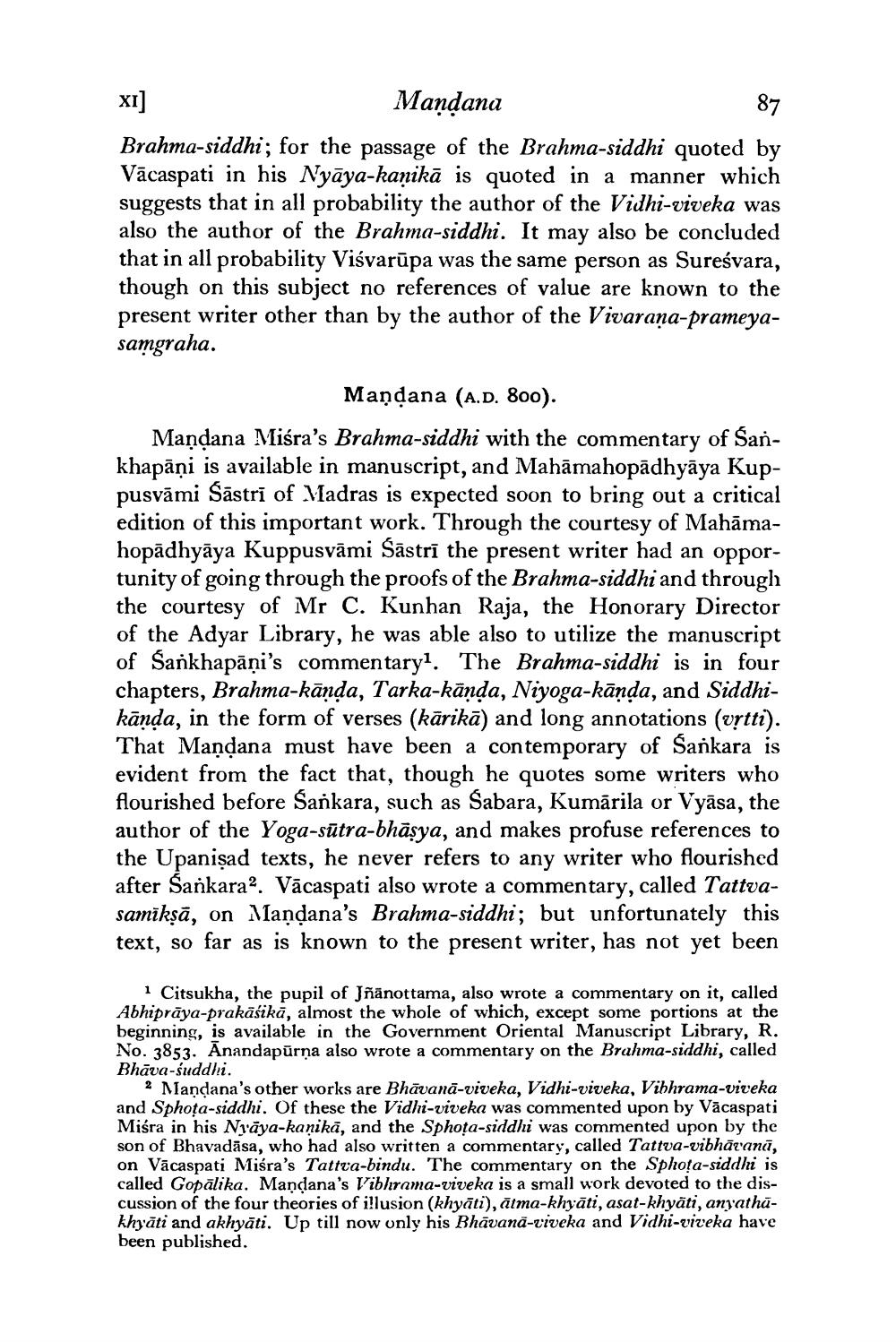________________
XI
87
Mandana Brahma-siddhi; for the passage of the Brahma-siddhi quoted by Vācaspati in his Nyāya-kaņikā is quoted in a manner which suggests that in all probability the author of the Vidhi-viveka was also the author of the Brahma-siddhi. It may also be concluded that in all probability Viśvarūpa was the same person as Sureśvara, though on this subject no references of value are known to the present writer other than by the author of the Vivarana-prameyasamgraha.
Mandana (A.D. 800). Mandana Misra's Brahma-siddhi with the commentary of Sankhapāņi is available in manuscript, and Mahāmahopādhyāya Kuppusvāmi Sāstrī of Madras is expected soon to bring out a critical edition of this important work. Through the courtesy of Mahāmahopadhyāya Kuppusvāmi Sāstrī the present writer had an opportunity of going through the proofs of the Brahma-siddhi and through the courtesy of Mr C. Kunhan Raja, the Honorary Director of the Adyar Library, he was able also to utilize the manuscript of Sarkhapāņi's commentary. The Brahma-siddhi is in four chapters, Brahma-kānda, Tarka-kānda, Niyoga-kānda, and Siddhikānda, in the form of verses (kārikā) and long annotations (vrtti). That Mandana must have been a contemporary of Sankara is evident from the fact that, though he quotes some writers who flourished before Sankara, such as Sabara, Kumārila or Vyāsa, the author of the Yoga-sūtra-bhāsya, and makes profuse references to the Upanişad texts, he never refers to any writer who flourished after Sankara”. Vācaspati also wrote a commentary, called Tattvasamikṣā, on Nandana's Brahma-siddhi; but unfortunately this text, so far as is known to the present writer, has not yet been
1 Citsukha, the pupil of Jñanottama, also wrote a commentary on it, called Abhiprāya-prakāśikā, almost the whole of which, except some portions at the beginning, is available in the Government Oriental Manuscript Library, R. No. 3853. Anandapūrņa also wrote a commentary on the Brahma-siddhi, called Bhāva-buddhi.
2 Mandana's other works are Bhāvanā-viveka, Vidhi-viveka, Vibhrama-viveka and Sphota-siddhi. Of these the Vidhi-viveka was commented upon by Vācaspati Miśra in his Niāya-kanikā, and the Sphota-siddhi was commented upon by the son of Bhavadāsa, who had also written a commentary, called Tattva-vibhāvanā, on Vācaspati Misra's Tattua-bindu. The commentary on the Sphota-siddhi is called Gopālika. Mandana's Vibhrama-viveka is a small work devoted to the discussion of the four theories of illusion (khyāti), ātma-khyāti, asat-khyāti, anyathūkhyāti and akhyāti. Up till now only his Bhāvanā-viveka and Vidhi-viveka have been published.




